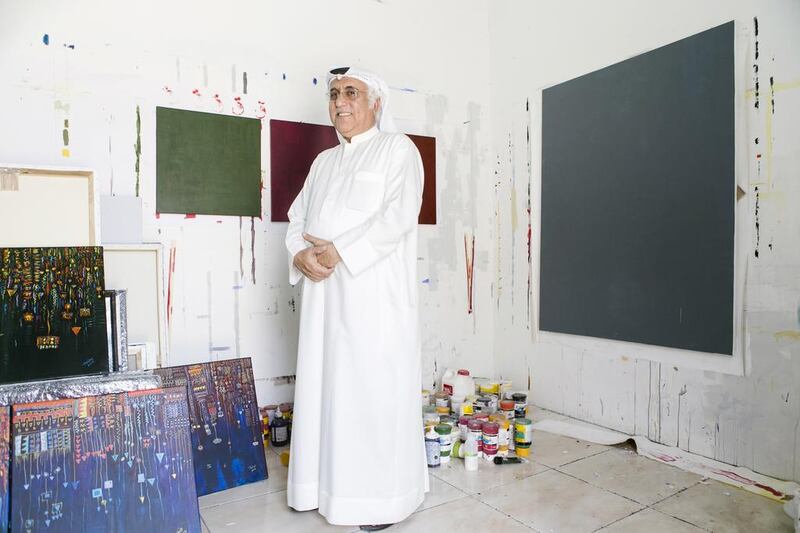In his oil-on-canvas painting from 1989, Mohammed Al Qassab’s trademark style was already beginning to appear. It depicts a woman sitting majlis-style, her brown eyes visible underneath the traditional burqa. Visible brushstrokes and splodges of colour evoke the desert landscape.
The artwork took first prize at the first GCC Fine Arts Exhibition at Abu Dhabi’s Cultural Foundation the same year that it was created, and holds a special significance for the artist.
It is also one of three oil paintings by the artist chosen by Sheikha Hoor Al Qasimi for the UAE's National Pavilion exhibition, 1980 – Today: Exhibitions in the UAE, at the Venice Biennale.
“These pieces show the beginning of my art,” says Al Qassab. “It was a really positive time, it was when we started to believe we could really make a career out of art. It wasn’t easy to get started, but we supported each other.”
Al Qassab belongs to the founding generation of artists that shaped the future of the art scene, and shares the spotlight with 14 of his peers at the Venice Biennale.
The 120 artworks currently on show at the UAE Pavilion – a large number for such an intimate space – were deliberately placed to recall the spirit of that vibrant time.
Al Qassab, who was born in Dubai in 1960, started exhibiting in 1983.
“At that time, not many people took on the challenge of figure drawing, so I decided to go ahead. The idea of realism also really interested me and I started with painting the scenes I saw around me, from people to wind towers, dhows and the old houses.”
But within a decade, Al Qassab had found his calling in abstract painting – a path that many other artists also followed.
“In the end, I moved into abstract automatically. I felt more comfortable doing this and also, I was influenced by my peers – we were always working together and we encouraged each other to continue pushing ourselves.”
Those variations of colour and shape are still seen in Al Qassab’s more contemporary works.
He uses intense palettes to create grid-like structures of expanding and contracting space within rich layers, and draws inspiration from the patterns and textures around him such as textiles, woven baskets and architectural details.
“I like to keep some familiar elements in my work – the eye needs something to connect to.”
It is this kind of visible progression that adds an extra dimension to the Venice exhibition. Rather than showing current works, Sheikha Hoor mapped out the history of the national tradition of art.
“It is an excellent idea to document this time,” Al Qassab says. “It is also a wonderful opportunity for me and the other artists to display our art at the prestigious Venice Biennale.
“I feel lucky to have been part of a special time in our history. It feels good to know that I have done something with my life and that I have contributed to my country’s growth and of course, that it still continues.”
aseaman@thenational.ae





